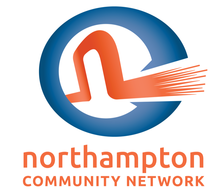With so many people working from home or just home due to the coronavirus pandemic, Internet service providers have been affected. This New York Times story discusses some of the impact it is having slowing Internet service to the home as network demand skyrockets.
It’s affecting people in Northampton too. One on our coalition noticed sizable streaming delays last night — the hourglass that comes up sometimes when streaming is temporarily halted. When this happens it is likely one of two things:
- The wireless router in the house is operating inefficiently, and needs a reboot
- The service from the ISP is slow
So we did a speed test. We pay for Comcast’s “up to” 800 megabits per second service. We got 35 mbps download and 10 mbps upload from a directly wired Ethernet connection. 10 mbps upload is capped by Comcast, but if the bandwidth were available we could have gotten 800 mbps download.
Clearly we weren’t getting it. We were getting about four percent of the download bandwidth we pay $97.95 per month for.
This is happening for one of two reasons, which could include both:
- In the local neighborhood, the shared bandwidth for Internet traffic is maxed out as lots of people try to surf, teleconference and stream at the same time on a shared coaxial cable
- Comcast’s network does not have enough upstream bandwidth to connect with other networks. For example, it may not have enough bandwidth with Google to stream all the demands for content from YouTube.
It doesn’t have to be this way, but it’s the way it is because our Internet service is provided by a private company that hasn’t built out the infrastructure needed for peak demand. We are at a moment of national crisis, and we don’t have the Internet infrastructure locally to handle it. If the network can’t handle teleworking efficiently, it’s going to impact productivity. It might affect people seeking information on COVID-19.
A community network could solve this problem. A standard 1 gigabit per second fiber connection to the home would minimize issues with shared bandwidth. Like Comcast, a community network would need to purchase bandwidth from providers. There is a cost for doing this that will need to be factored into engineering a community network. But it is likely that the city would do a better job of managing peak demand than Comcast, and it’s highly unlikely that locally bandwidth would be congested on a fiber network.
We urge citizens and businesses of Northampton to support the creation of a municipal network for our city, so our economy is minimally impacted during times like these. Robust Internet is no longer a nice-to-have thing. It’s a critical service and as such must be overseen and run by local governments working in the public’s interest.

Excellent explanation. Any anticipated dates…
Responses to the city’s RFP to study a community network have been received and need evaluation. There will be some delay to selecting a vendor due to the effects of coronavirus mitigation by the city.